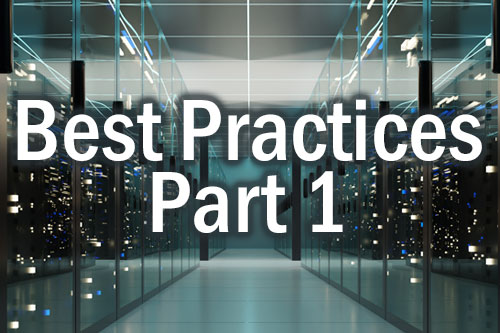Cloud service providers, here are 10 best practices—courtesy of Supermicro—that you can follow for designing and deploying rack-scale data centers. All are based on Supermicro’s real-world experience with customers around the world.
Best Practice No. 1: First standardize, then scale
First, select a configuration of compute, storage and networking. Then scale these configurations up and down into setups you designate as small, medium and large.
Later, you can deploy these standard configurations at various data centers with different numbers of users, workload sizes and growth estimates.
Best Practice No. 2: Optimize the configuration
Good as Best Practice No. 1 is, it may not work if you handle a very wide range of workloads. If that’s the case, then you may want to instead optimize the configuration.
Here’s how. First, run the software on the rack configuration to determine the best mix of CPUs, including cores, memory, storage and I/O. Then consider setting up different sets of optimized configurations.
For example, you might send AI training workloads to GPU-optimized servers. But a database application on a standard 2-socket CPU system.
Best Practice No. 3: Plan for tech refreshes
When it comes to technology, the only constant is change itself. That doesn’t mean you can just wait around for the latest, greatest upgrade. Instead, do some strategic planning.
That might mean talking with key suppliers about their road maps. What are their plans for transitions, costs, supply chains and more?
Also consider that leading suppliers now let you upgrade some server components without having to replace the entire chassis. That reduces waste. That could also help you get more power from your current racks, servers and power requirements.
Best Practice No. 4: Look for new architectures
New architectures can help you increase power at lower cost. For example, AMD and Supermicro offer data-center accelerators that let you run AI workloads on a mix of GPUs and CPUs, a less costly alternative to all-GPU setups.
To find out if you could benefit from new architectures, talk with your suppliers about running proof-of-concept (PoC) trials of their new technologies. In other words, try before you buy.
Best Practice No. 5: Create a support plan
Sure, you need to run 24x7, but that doesn’t mean you have to pay third parties for all of that. Instead, determine what level of support you can provide in-house. For what remains, you can either staff up or outsource.
When you do outsource, make sure your supplier has tested your software stack before. You want to be sure that, should you have a problem, the supplier will be able to respond quickly and correctly.
Do more:
- Check out best practices 6 - 10 in Part 2 of this blog series.
- Get 2 bonus recommendations from the full Supermicro white paper: 10 Best Practices for CSPs to Scale the Data Center



